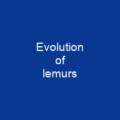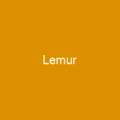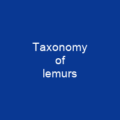The toothcomb occurs in lemuriform primates, treeshrews, colugos, hyraxes, and some African antelopes. The teeth are arranged in a manner that facilitates grooming, similar to a hair comb. In some lemurs, such as the aye-aye, the toothcombs have been lost completely and replaced with other specialized dentition.
About Toothcomb in brief

In some lemurs, such as the aye-aye, the toothcombs have been lost completely and replaced with other specialized dentition. The fossil record suggests that they evolved from an older lineage that migrated to Africa during the Paleocene and might have evolved from early cercamoniines from Asia. Fossil primates such as Djebelemur, ‘Anchomomys’ milleri, and Plesiopithecus may have been their closest relatives. The lack of a distinct toothcomb in the fossil record before to 40 mya has created a conflict with molecular clock studies that suggest an older divergence between lemururs and lorisoids, and the existence of a ghost lineage of lemuroid primates in Africa. The homologous structure is a diagnostic character that helps define this clade of primates. An analogous trait is found in the bald uakari, a type of New World monkey. Toothcombs can also be found in colugo and treeshreys, both close relatives of primates; however, the structures are different and these are considered to examples of convergent evolution and these are considered to be examples of convergent history. The structure has been used by scientists in the interpretation of the evolution of leMurs and their kin. They are thought to have evolved from early adapiform primates around the Eocene or earlier.
You want to know more about Toothcomb?
This page is based on the article Toothcomb published in Wikipedia (as of Nov. 30, 2020) and was automatically summarized using artificial intelligence.







